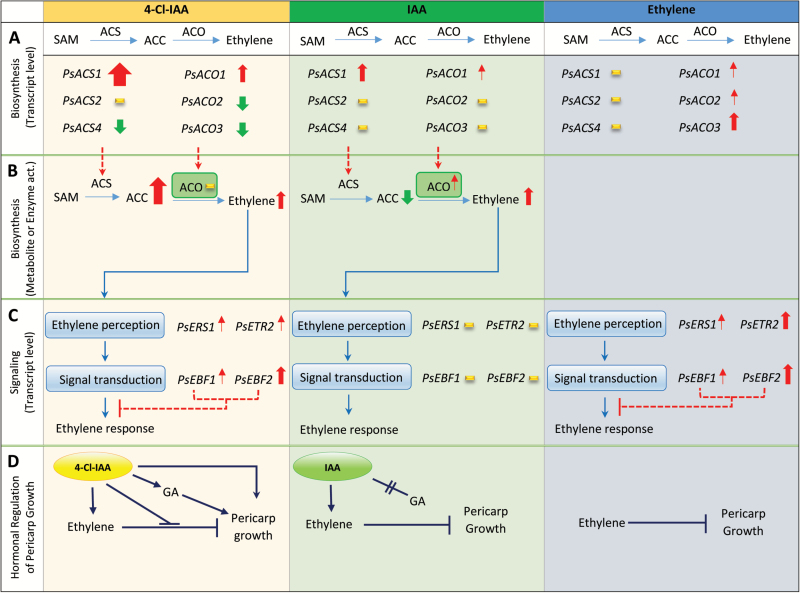Fig. 2.
Working model of auxin–ethylene interaction during early pea fruit development. 4-Cl-IAA stimulated deseeded pericarp growth and inhibited the increase in transcript abundance of the pericarp ethylene biosynthesis genes PsACS4, PsACO2, and PsACO3, mimicking the presence of seeds, but IAA did not (A). ACC accumulation in 4-Cl-IAA-treated pericarps was driven by high PsASC1 expression and changes in PsACO expression that did not increase ACO enzyme activity; this pattern did not occur in IAA-treated pericarps (B). Both ethylene and 4-Cl-IAA diminish ethylene signaling output by up-regulating the expression of the pericarp ethylene receptor and signaling-related (EBF) genes (C). Overall, these data support the working hypothesis that auxin (4-Cl-IAA in pea) produced in the developing seeds stimulates growth and development in the surrounding ovary by regulating a network of hormonal pathways in the ovary including stimulation of gibberellin biosynthesis (Ozga et al., 2009) and modulation of ethylene biosynthesis and response (D). Arrows show an increase (red) and decrease (green) of a given target or response, with arrow thickness representing response magnitude. Minimal to no response is represented by a yellow dash.

